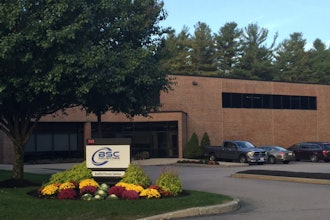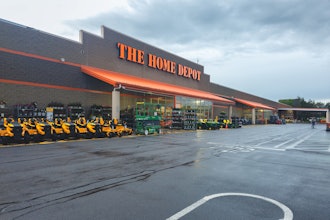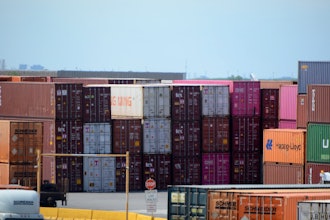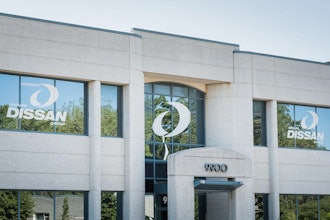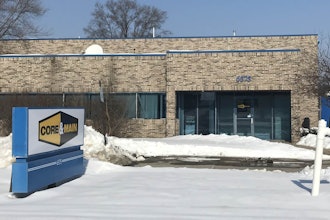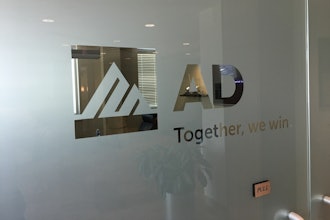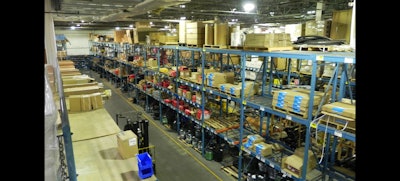
From a recent Q&A interview with Fortna's director of industrial distribution and a senior analyst at BB&T Capital Markets, see their thoughts on key trends/challenges impacting the market landscape, mergers & acquisitions and channel convergence. This is part 1 of a two-part series.
Short, Mid and Long-Term Trends
What key trends/challenges do you see shaping the industrial distribution landscape in the short, mid and long-term?
Redding (BB&T): We believe the primary near-term challenges within industrial distribution include 1) reduced commodity pricing, 2) weaker pricing leverage given minimal (or negative) inflation, and 3) ongoing forex headwinds. In theory, lower energy prices should serve as a catalyst for more significant manufacturing demand, in our view. However, to date the precipitous decline in crude (and ancillary commodities) throughout much of last year has had a material negative impact on both industrial and energy-related end markets, in our view — particularly those commodity-centric regions such as West Canada and portions of the U.S. Gulf Coast. We believe the recent uptick in headline crude has yet to positively impact the majority of distributors, although signs point to early stabilization in the second half of 2016.
 Charles E. Redding, Senior Analyst, Equity Research, BB&T Capital Markets
Charles E. Redding, Senior Analyst, Equity Research, BB&T Capital MarketsAnother near-term challenge includes zero inflation, which continues to pressure pricing for many OEMs and distributors. With lighter pricing comes added margin pressure, and many distributors have become increasingly aggressive on controllable costs where possible to help offset the added strain. Sustained increases in select commodity prices (namely steel) could provide distributors with nascent pricing leverage. This said, we believe the impact of such increases is limited barring a more appreciable pickup in overall domestic manufacturing activity.
Perhaps even more notably, foreign exchange pressures remain another ongoing challenge. U.S. manufacturers continue to face reduced export demand given the stronger USD, while foreign assets remain discounted in many instances.
More medium and long-term challenges for distribution could include 1) structural deficiencies for U.S. manufacturers hampered by trade inequalities, 2) skilled labor shortages for U.S. manufacturers impacting competitive viability, 3) future declines in U.S. GDP or a more recessionary demand environment and 4) future changes in end-market demand preferences for industrial-specific goods.
Leja (Fortna): Your points are spot on from the view point of economic indicators for the industry as a whole. Our thoughts are through more of a supply chain lens. Near term (one to two years), we see increased competition from Amazon in the U.S. and in Europe. Customer expectations around speed will continue to increase and drive a different set of order profiles as B2C experience drives B2B buyer expectations. We see clients looking more at automation and Goods-to-Person MHE that weren’t as justifiable a few years back. Taking what we are calling “the European View.” Yesterday’s distribution operation shipped by the case; whereas today’s operations have to be built to handle each-picks, as well as case and pallet picking.
 Helgi Thor Leja, Director and Industrial Distribution Leader, Fortna
Helgi Thor Leja, Director and Industrial Distribution Leader, FortnaMid-term (two to five years) the labor market will prove a challenge for distributors. The competition for labor will drive increases in hourly wages that have significant bottom line impacts. For every $1 increase in wages, small to mid-size distribution operations will see a $1 million increase in operating costs per year. Those margin hits will have to be covered somewhere. We see clients looking to maximize productivity through optimizing operations, automating for speed, and investing in new competitive advantage capabilities.
Long-term (five years+) the transformation to full Omni-Channel operations should be nearing completion. But omni-channel will require both robust back end systems and integration with sophisticated front end systems. These projects take a long time to implement and require a roadmap to ensure alignment along the way. So companies that are not developing that roadmap or taking first steps now will be left behind. Commitment to a long-term strategy for competitive advantage, as you implement short-term changes, takes vision and resolve.
Mergers & Acquisitions Trends
M&A has always been an important element of the industrial distribution space. Do you see this trend accelerating/declining? Are companies integrating these new acquisitions efficiently and intelligently from both a business and supply chain perspective?
Redding (BB&T): We believe it’s reasonable to expect a modest acceleration of M&A activity for select industrial distributors over the coming quarters. Low-cost debt remains plentiful, and more substantial organic growth has been elusive for many providers in recent quarters. Acquisition integration remains focused on earnings accretion through achievable cost synergies, in addition to product/segment cross-selling opportunities. Recent distribution headwinds (to include forex, lower commodity prices, and weaker growth in domestic industrial production) have proven significant. Despite the noted challenges, we would expect M&A to remain critical for many providers. In a recent earnings call, management from MSC Industrial noted, “Despite significant changes in the environment, (there’s) not a significant change in our approach here, in what we're seeing or how we're thinking about M&A, which is, we certainly keep our ears and eyes wide open. I have not seen a radical change in activity levels.”
Both WESCO International and Applied Industrial Technologies also remain active toward M&A opportunities. WESCO acquired seven companies between 2012-2014 ($3.1B of acquired sales), including LaPrairie, Hazmasters, and Hi-Line in 2014. Recent U.S. acquisitions include Aelux, Hill Country and Needham ($1.9B combined sales), as well as the recently announced acquisition of Atlanta Electrical Distributors (annual revenue ~$85M). For Applied, the recent acquisition of HUB Industrial Supply marks the company’s third acquisition in the last two quarters following the integration of Atlantic Fasteners and S.G. Morris Company (closed July-September 2015). Additionally, AIT management has suggested that M&A will continue to be a major part of the company growth profile within all current and noncurrent customer geographies and end markets.

Leja (Fortna): In the current economy, there’s lots of opportunity to build market share through acquisition. Smaller distributors that were seeking premium valuation a few years ago, may be more fairly priced today.
Our clients are actively pursuing acquisitions — seeking companies with complementary products and services to enable them to offer a broader selection to their own customer base or enable growth through expansion of their base within a particular category. But that has impact to their supply chain.
The key to realizing value from M&A is in the integration. We advise clients to take a holistic approach that ensures the integration is executed with people, processes, technology and assets in mind, and rooted firmly in the business case. A successful integration starts by taking into consideration the people (communication plans, concerns about job loss, sharing the vision, etc.), the processes of each business (can we take advantage of best in class across both companies?), the technology (front end, back end, like and disparate systems, etc.), and assets (buildings, inventory, equipment, etc.), and must be coupled with the strong commitment from leadership.
Channel Growth
What are your thoughts on channel growth/proliferation of channels? Are there any drivers to this trend?
Redding (BB&T): Without question, e-commerce will continue to play a more significant role within industrial distribution going forward, in our view. For HD Supply, 55 percent of Q4’15 sales within the company’s Facilities Maintenance business were conducted online. The company recently noted, “I think you'll continue to see a digital move as we make more friction-free processes for our customers … I think that trend is going to continue upwards of 75 percent. And we'll continue to refine that as we go, and I think we're perfectly aligned to be able to do that. We have a very nice process of being able to grow and being able to manage all of our assets both human and digital on a synchronous basis. So, I feel really good about it. But it'll continue to get more and more digital.”
W.W. Grainger also remains at the fore of e-commerce innovation. The company estimates that ~50 percent of total orders are currently received online (or almost 60 percent if you include KeepStock, the company’s inventory management service). Management recently noted, “I would see a world where digital is really first and almost everything that happens. I think our customers' expectation is that they're going to order pretty much everything online, large customers for sure, but even smaller and mid-sized businesses now ordering online would create frequency. So, I think we'll be somewhere 70 to 80 percent five years from now, in terms of origination.”

Leja (Fortna): Likewise, we are seeing a convergence of channels happening. There used to be companies whose primary means of distribution was through the branch and others who took more catalog orders, but now nearly every company is juggling multiple channels and fulfillment nodes, where service becomes the key differentiator.
As more Millennials enter the workforce, we see a growing trend toward online ordering for everything. Fulfillment and distribution must be geared to support that. And you have to remember that the digital channel represents more than sales — it’s influence. The digital channel influences offline sales, as people seek information and inventory online and complete transactions in more traditional ways. But it all has to be seamless, and that’s the hard part. Companies must adjust to the new reality that they are selling around the clock, every day of the year through their online presence. The information they see online has to match what the branch or customer service representative can deliver in terms of inventory, price and service levels. If you fail on any one of those fronts, you will lose trust and erode confidence in the brand.
And don’t forget about mobile. Mobile growth is exponential as we all carry these smart devices in our pockets around the clock. You need to get ready for that. As consumers grow accustomed to ordering online, they are doing so from their desktop as well as across a number of mobile devices. This is leading to a new phenomenon called “snacking” where customers place several smaller orders throughout the day as a need arises instead of placing a single larger order at the end of the day or week. The impacts on your order profiles and on your shipping costs can be significant.
For example, one of our prospective clients developed a mobile application that allows the independent service technician/installer to search and order any part necessary to finish the job. More importantly, the prospective client will then deliver those parts to the technician/installer so they don’t lose time and money to drive to a branch to pick up the product. This saves time and money and allows the technician/installer to more profitably run their own business while creating unmatched loyalty to our client.
About the authors
Helgi Thor Leja, Director and Industrial Distribution Leader, Fortna
Helgi Thor Leja works with leading Industrial Distributors to drive improvements in distribution that result in top-line growth and bottom-line efficiencies. He runs the Industrial Distribution practice at Fortna Inc. In Mr. Leja’s 21 year career, he has held positions leading day-to-day distribution operations as well as consulting with clients to improve their supply chain operations.
Fortna is a professional services firm helping companies with complex distribution operations meet customer promises and competitive challenges profitably.
Charles E. Redding, Senior Analyst, Equity Research, BB&T Capital Markets
Vice president and Senior Research Analyst, Charles E. Redding, who has been with BB&T Capital Markets since December 2007, follows the Environmental Services and Industrial Distribution sectors. In Thomson Reuters/StarMine's 2016 Analyst Awards for Excellence, he was ranked No. 3 for his stock picking in Commercial Services and Supplies. Previously he was an associate analyst in the Engineering & Construction and the Specialty Finance sectors.
BB&T Capital Markets provides a full spectrum of capital and advisory solutions including research, sales and trading, equity and debt underwriting, M&A advisory and corporate banking.











